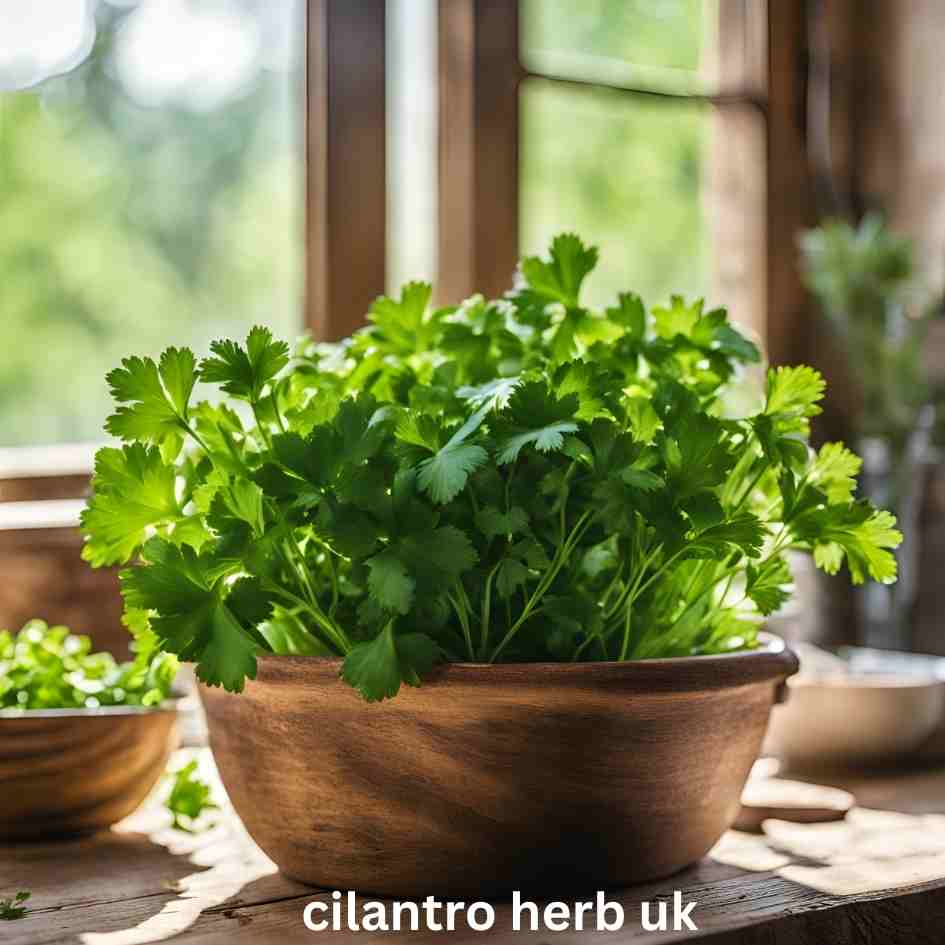Cilantro Herb UK: Growing, Uses, and Benefits
Introduction
Cilantro herb, also known in the UK as coriander when referring to its seeds, is a versatile plant cherished for its distinct flavor and numerous benefits. Whether you’re a seasoned gardener or a culinary enthusiast, understanding how to cultivate cilantro in the UK, its uses, and its benefits can enhance your gardening and cooking experiences. In this article, we’ll dive into everything you need to know about growing cilantro herb uk, its various applications, and its benefits.
What is Cilantro?
Cilantro is the term used for the fresh leaves and stems of the Coriandrum sativum plant. In contrast, coriander refers to the seeds produced by the same plant. This herb is known for its bright, citrusy flavor and is used in many dishes worldwide. While “coriander” is more commonly used in the UK, “cilantro” is also increasingly recognized, especially in recipes and gardening circles.
Cilantro Herb UK: Understanding Its Popularity
Why Cilantro is Popular in the UK
Cilantro’s popularity in the UK can be attributed to its role in various cuisines, including Indian, Mexican, and Mediterranean dishes. Its ability to enhance flavors and add a fresh note to recipes makes it a valuable herb in many kitchens.
Varieties Suitable for the UK Climate
The UK climate, characterized by its cooler temperatures and varying sunlight, requires specific cilantro varieties. Some cilantro varieties are better suited to this environment, ensuring successful growth and a bountiful harvest.
Growing Cilantro Herb in the UK
Choosing the Right Location
Sunlight Requirements: Cilantro prefers a sunny spot but can tolerate partial shade, which is ideal for the UK’s often overcast conditions. Aim for a location that receives at least 4-6 hours of sunlight daily.
Soil Preferences: Cilantro thrives in well-drained soil rich in organic matter. Ensure your soil is light and loose to facilitate healthy root development.
Planting Cilantro
When to Plant: The best times to plant cilantro in the UK are early spring and late summer. Cilantro is a cool-season herb and does not do well in the extreme heat of summer.
Seed vs. Seedling: Growing cilantro from seeds is cost-effective and allows you to harvest more. Alternatively, seedlings provide a quicker start and can be a good option if you’re looking for faster results.
Care and Maintenance
Watering Guidelines: Keep the soil consistently moist but not soggy. Regular watering is essential to prevent the plant from drying out.
Fertilizing: Use a balanced fertilizer to provide essential nutrients. Avoid over-fertilizing as it can impact the herb’s flavor.
Common Pests and Diseases: Cilantro can be prone to pests like aphids and mildew. Regular monitoring and organic pest control methods can help keep these issues in check.
Harvesting Cilantro
Cilantro is ready to harvest when the leaves are full-sized and vibrant. Regular harvesting encourages the plant to continue producing fresh leaves. Use sharp scissors or shears to cut the leaves, leaving some behind to ensure ongoing growth.
Uses of Cilantro Herb
Culinary Uses
Cilantro is a critical ingredient in various dishes, adding a fresh and zesty flavor. It is used in salads, salsas, soups, and garnish. While fresh cilantro is preferred for its intense flavor, dried cilantro can also be used in cooking, though it lacks the same vibrancy.
Medicinal Uses
Cilantro is celebrated for its health benefits. It is rich in antioxidants and has been used traditionally to aid digestion, reduce inflammation, and alleviate anxiety. Incorporating cilantro into your diet can contribute to overall well-being.
Benefits of Growing Cilantro Herb UK
Nutritional Benefits
Cilantro is packed with essential vitamins and minerals, including vitamins A, C, and K, as well as potassium and calcium. Its antioxidant properties can help combat oxidative stress and support a healthy immune system.
Economic Benefits
Growing cilantro at home is cost-effective compared to purchasing it from stores. It allows you to enjoy fresh herbs conveniently and can be a rewarding addition to your gardening efforts.
Challenges and Solutions
Common Growing Problems
Cilantro may face challenges such as bolting (when the plant flowers and goes to seed prematurely) and leaf drop. These issues can arise from temperature extremes or improper care.
Troubleshooting Tips
To prevent bolting, maintain a relaxed environment for your cilantro and avoid excessive fertilization. Regularly check for pests and diseases and address any issues promptly to keep your plants healthy.
Conclusion
Growing Cilantro Herb UK offers numerous advantages, from enhancing your culinary creations to providing various health benefits. With the proper knowledge and care, you can successfully cultivate this herb and enjoy its fresh, flavorful contributions to your meals. Embrace the opportunity to grow cilantro and enrich your kitchen with this versatile herb.
FAQs
How long does it take for cilantro to grow?
Cilantro typically takes about 3 to 4 weeks from planting to harvest.
Can cilantro be grown indoors?
Yes, cilantro can be grown indoors in pots or containers with sufficient light.
How do I prevent cilantro from bolting?
To prevent bolting, keep cilantro in a relaxed environment and avoid over-fertilizing.
What are some recipes using cilantro?
Cilantro is great in guacamole, Thai curry, and fresh salsa.
Is cilantro suitable for all climates?
Cilantro prefers cooler climates and may struggle in sweltering conditions.














Post Comment